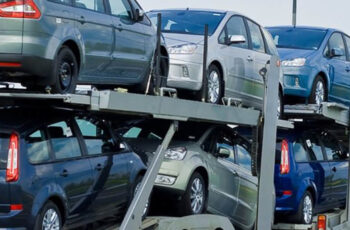The automotive industry has been evolving rapidly, with newer and more advanced vehicles hitting the roads every day. However, this progress also means an ever-increasing number of end-of-life vehicles (ELVs) that need proper disposal. To address this environmental challenge, auto wrecking and recycling have emerged as sustainable practices that contribute to reducing waste and conserving resources. In this blog, Car Wreckers Perth delve into the inner workings of auto wrecking and recycling, highlighting their importance in the context of environmental preservation and sustainable living.
Auto Wrecking: The First Step
Auto wrecking, also known as auto dismantling or scrapping, is the initial phase in the recycling process. When a vehicle reaches the end of its useful life due to age, damage, or other factors, it is taken to an authorized auto wrecking facility. Here, trained professionals carefully dismantle the vehicle, salvaging any functional parts and separating recyclable materials from hazardous ones.
The dismantling process starts with draining and disposing of hazardous fluids such as oil, gasoline, and coolant in an environmentally friendly manner. Following this, the valuable components like the engine, transmission, and electronics are carefully removed and assessed for potential resale or reuse.
Recycling: A Multi-Stage Process
Once the valuable parts are salvaged during the auto wrecking phase, the vehicle is ready to undergo recycling. Recycling ELVs is an intricate and multi-stage process aimed at reusing as much material as possible, reducing waste, and minimizing the environmental impact.
Here’s how it works:
- Shredding: In this step, the remaining vehicle shell is crushed and shredded into small pieces using powerful industrial machines. The shredded material is then sorted into different categories, including metals, plastics, glass, and rubber.
- Sorting and Separation: The mixed shredded material is transported to specialized sorting facilities. Advanced technologies, such as magnetic separators, eddy current separators, and air classifiers, are used to separate ferrous and non-ferrous metals, plastics, and other materials.
- Metal Recovery: One of the key objectives of recycling ELVs is to recover valuable metals like steel, aluminum, and copper. These materials are in high demand in various industries, and recycling helps reduce the need for energy-intensive mining and processing of raw materials.
- Plastic Recycling: The sorted plastic materials are processed to remove any impurities and then reprocessed into raw plastic pellets. These pellets can be used in manufacturing new automotive components or other products.
- Energy Recovery: Some materials, such as non-recyclable plastics and rubber, may be used as fuel sources for energy recovery in waste-to-energy facilities. This process helps reduce the reliance on fossil fuels and minimizes landfill waste.
Environmental Benefits
Auto wrecking and recycling play a crucial role in promoting environmental sustainability. Here are some of the significant benefits:
- Resource Conservation: Recycling ELVs reduces the need for new raw materials. Helping to conserve natural resources like iron ore, aluminum, and crude oil.
- Energy Savings: Recycling metal requires significantly less energy compared to primary metal production. Leading to a substantial reduction in greenhouse gas emissions.
- Landfill Diversion: By recycling ELVs, we divert a significant amount of waste from landfills. Reducing the strain on these sites and preventing the release of harmful chemicals into the environment.
- Pollution Reduction: Proper disposal of hazardous materials during auto wrecking prevents pollutants from contaminating soil and water sources.
Conclusion
Auto wrecking and recycling represent essential steps towards a sustainable future, as they provide an environmentally responsible approach to dealing with end-of-life vehicles. By salvaging valuable components and recycling materials, we can reduce waste, conserve resources, and minimize our ecological footprint. Embracing these practices not only benefits the environment but also supports the growth of a circular economy. Where resources are reused and repurposed for a more sustainable world. As consumers, manufacturers, and policymakers. We all have a role to play in promoting the responsible recycling of end-of-life vehicles. Nurturing a greener and cleaner planet for generations to come.









